Wakefield nostalgia: Historic postcards provide fascinating into Wakefield's past
They depict administrative buildings, churches, traders, street scenes, schools, pubs, cinemas, hospitals and railway stations.
A view exists of the Queen Elizabeth Grammar School. It was founded by Royal Charter of Queen Elizabeth in 1591 at the request of some of Wakefield's prominent people, including Thomas Saville and his two sons. The original Elizabethan school building still exists on Brook Street.
Advertisement
Hide AdAdvertisement
Hide AdThe school moved to Northgate in 1854 and into a building erected in 1833-4 to the designs of Manchester-based architect Richard Lane (1795 – 1880). Previously the building was occupied by the West Riding Proprietary School. Today, the QEGS is still regarded as one of the country's best independent schools.
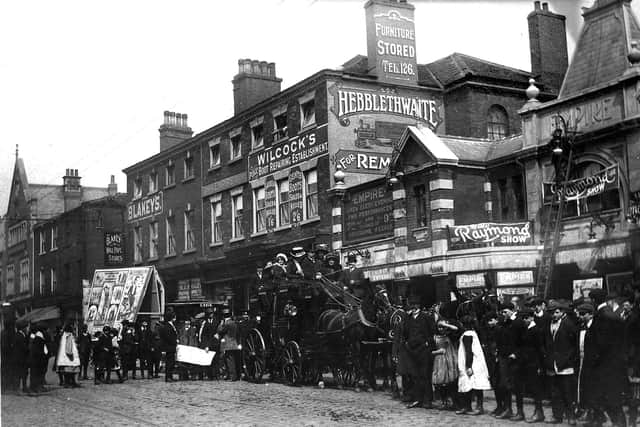

Many old postcards show Wakefield’s Chantry Bridge area. This was once a hive activity but has since fallen away and it is now an idyllic backwater. The bridge, sections dating from c. 1342, once provided a crossing over the River Calder for a main arterial road stretching from the midlands and up through the town to Leeds.
To gain an idea of how busy the narrow bridge was in 1901, a survey taken between Wednesday May 1, and Saturday May 4, recorded: 5,304 horse-drawn vehicles, 8 traction engines, 15 motorcars, 3,530 bicycles and 629 horses and cattle. Before any proposal was submitted for trams to use the bridge an inspection was made by a Board of Trade Inspector.
Following authorisation, trams from the Yorkshire (West Riding) Electric Tramways Co. Ltd, ran over the bridge from 1904. A new bridge opened in 1933, and eventually took traffic away from the area.
Advertisement
Hide AdAdvertisement
Hide AdTowards the end of the 18th century local solicitor and developer John Lee was active in promoting a new town development on open land to the north and outside the Wakefield medieval town. St John's Square, completed around 1800, has on its north and west sides three-storey terraced town houses. Publisher/Photographer, W.C. Macham of Wakefield was responsible for a view looking down St Peter’s Square.
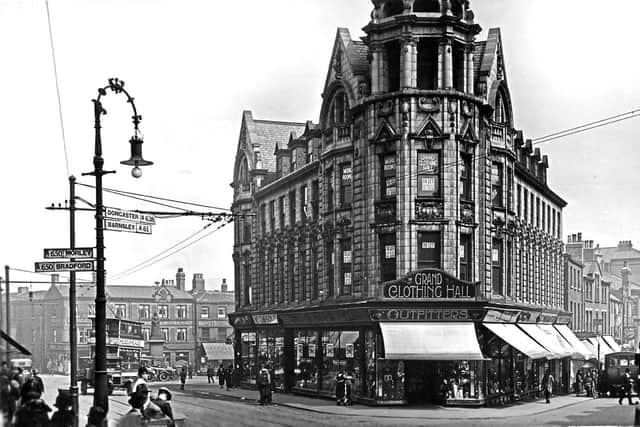

John Lee lived at no. 2, the property, facing south, having a substantial wooded and landscaped garden. His old property now carries a commemorative blue plaque. Under the leadership of Wakefield Civic Society, the square was extensively refurbished during the 1970s.
A close-up was taken of the Old Ship pub at 216 Kirkgate which can be traced to at least 1818. Thomas Avison was noted as the landlord in 1834. Amongst the former owners of the pub were: John Clayton, Joe Clayton, John Barrs and the Tadcaster Tower Brewery. The latter company was founded in 1882 and its name can be seen on a board above the Old Ship's frontage.
At the time the picture was taken, Charles H. Salmon was the licensee and he is noted as being there between 1899 – 1906. The Tadcaster Tower Brewery was purchased by Hammonds Bradford Brewery Co. (later Hammonds United Breweries Limited) in 1946 and the last known landlady at the Old Ship was Maud Shea in 1964. Formerly existing to the right of the pub was Ship Yard and the King Edward VII Inn (in Duchinak's premises).
Advertisement
Hide AdAdvertisement
Hide AdTo the rear, and slightly west, was the Grove Iron Works and the Ings Foundry. Since the pub's demolition a new spur from Ings Road to Kirkgate dominates much of the vacant area. Yet, the pub's name lives on, to the rear, in Ship Yard.
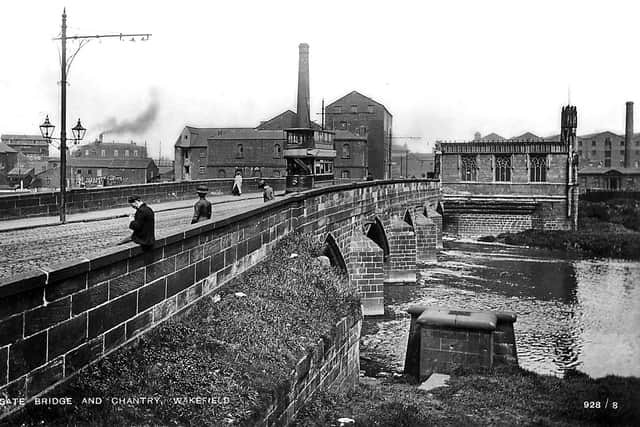

One Wakefield photographer took several views of the city’s Westgate railway station. Although opened on October 5, 1857 by the Bradford, Wakefield & Leeds Railway, services were operated by the GN and L&Y.
The facilities moved a very short distance to the north from May 1, 1867 after the completion of the West Riding & Grimsby Railway, which offered the GN a more direct route from Doncaster to Wakefield. The station was for joint use of the GN, Midland and Manchester, Sheffield & Lincolnshire Railways. Clearly visible was the 97 ft tall Italianate clock tower and ridge-and-furrow canopy over the platforms. The station's appearance was greatly altered during the late 1960s and included the demolition of the clock tower.
Set in planted, landscaped grounds the new Clayton Hospital and Wakefield General Dispensary opened in Northgate on 30 July 1879. It incorporated the Wakefield General Dispensary and the Wakefield House of Recovery and was supported by finance from former Wakefield Mayor Thomas Clayton whose wealth had been derived from tallow chandlery.
Advertisement
Hide AdAdvertisement
Hide AdOn his death in 1868, he left half his estate – approx. £600 annually to the hospital. An extension to the building was opened in November 1900. It was financed by Mrs Louisa Milnes in memory of her husband Colonel Milnes Gaskell of Lupset Hall. By the mid-20th century, the building was known simply as Clayton Hospital. The Hospital closed in 2012.
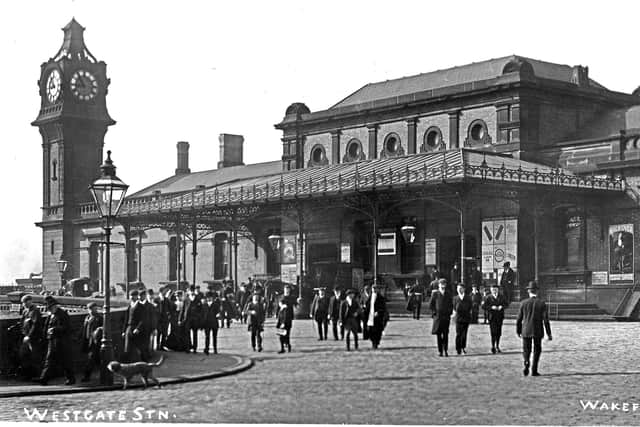

To house the headquarters of the West Riding County Council (WRCC), formed in 1889, tenders were invited three years later for the design of a suitable building. James Gibson and Samuel Russell's drawing, said to be 'of an Art nouveau character with Italian qualities to the decorations', was accepted and the building erected at the corner of Bond Street and Cliff Parade between 1894 – 1898. It was opened by the Chairman of the WRCC on 22nd February 1898.
Grindleford stone ashlar was used on the exterior, which was richly carved by W. Birnie of Edinburgh. George Crook of Wakefield added new wings to the building between 1912 and 1915. The WRCC occupied the premises until the organisation was abolished in 1974.
The building was inherited by the newly established West Yorkshire County Council until, in turn, it was abolished in 1986. Shortly afterwards, the County Hall was acquired by the City of Wakefield Metropolitan District Council.
Advertisement
Hide AdAdvertisement
Hide AdA wedge-shaped, ashlar, four-storey building at the Bull Ring/Cross Square corner was designed by Leeds architect Percy Robinson (1868 – 1950) who is also noted for his impressive commercial premises in other parts of the country.
The Wakefield building, photographed by Edgar Leonard Scrivens, was erected in 1906 in the classical style with a canted façade and domed cupola. Numerous businesses have occupied the building throughout its existence, but in 2014 Wakefield Civic Society's Design Awards gave formal recognition to the Cafe Marmalade frontage.
H.V. Richards of Wakefield produced a view of property at the Bull Ring, Northgate/Union Street north corner. It formerly housed business premises for baker and confectioner Charles Hagenbach (of Swiss Ancestry) for a number of years.
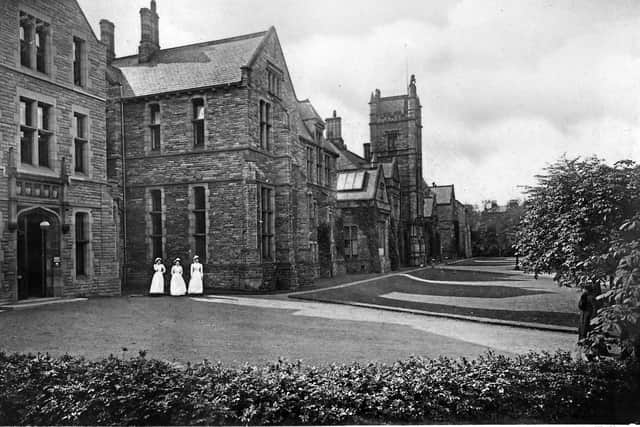

To the left was the Old Crown Yard which led to the company's bakery. As Hagenbach's business expanded, shops were established in other Wakefield district areas and vehicles were used to make deliveries. After the second World War, this corner was re-aligned and the business moved elsewhere in the city, establishing a bakery in Chald Lane and shops in Little Westgate and the Springs.
Advertisement
Hide AdAdvertisement
Hide AdIn time, Hagenbach's was one of Yorkshire's biggest bakery businesses, but in 1957 was sold to Allied Bakeries.
People eagerly crowded into a picture of The Empire cinema, Kirkgate. The building was designed by English theatrical architect Frank Matcham (1854 - 1920) as a variety theatre and opened on 20th December 1909.
The building was owned by the Sherwood family, and films, as well theatre, were part of the entertainment programme. When the premises were taken over by the Leeds firm, the New Century Company, they were re-styled Empire Super Cinema; the entertainment programme featuring films exclusively.
From 1928, the building was in the hands of Gaumont and closure came on 30 July 1960.
Advertisement
Hide AdAdvertisement
Hide AdPostcard photographers regularly featured Wakefield's noted areas such as Westgate, Kirkgate and the Bull Ring, but few took pictures of the city's lesser-known streets like Little Westgate.
It is also ironic that whilst few views exist of this street, Wakefield's noted photographers, George and John Hall ran the Cathedral Studio from there, taking many popular views in and around the Wakefield area. Since the Hall brothers' time, Little Westgate has become part of the Cathedral Conservation Area, designated in 1975.
It has been pedestrianised and some buildings have been Listed Grade II.
Comment Guidelines
National World encourages reader discussion on our stories. User feedback, insights and back-and-forth exchanges add a rich layer of context to reporting. Please review our Community Guidelines before commenting.